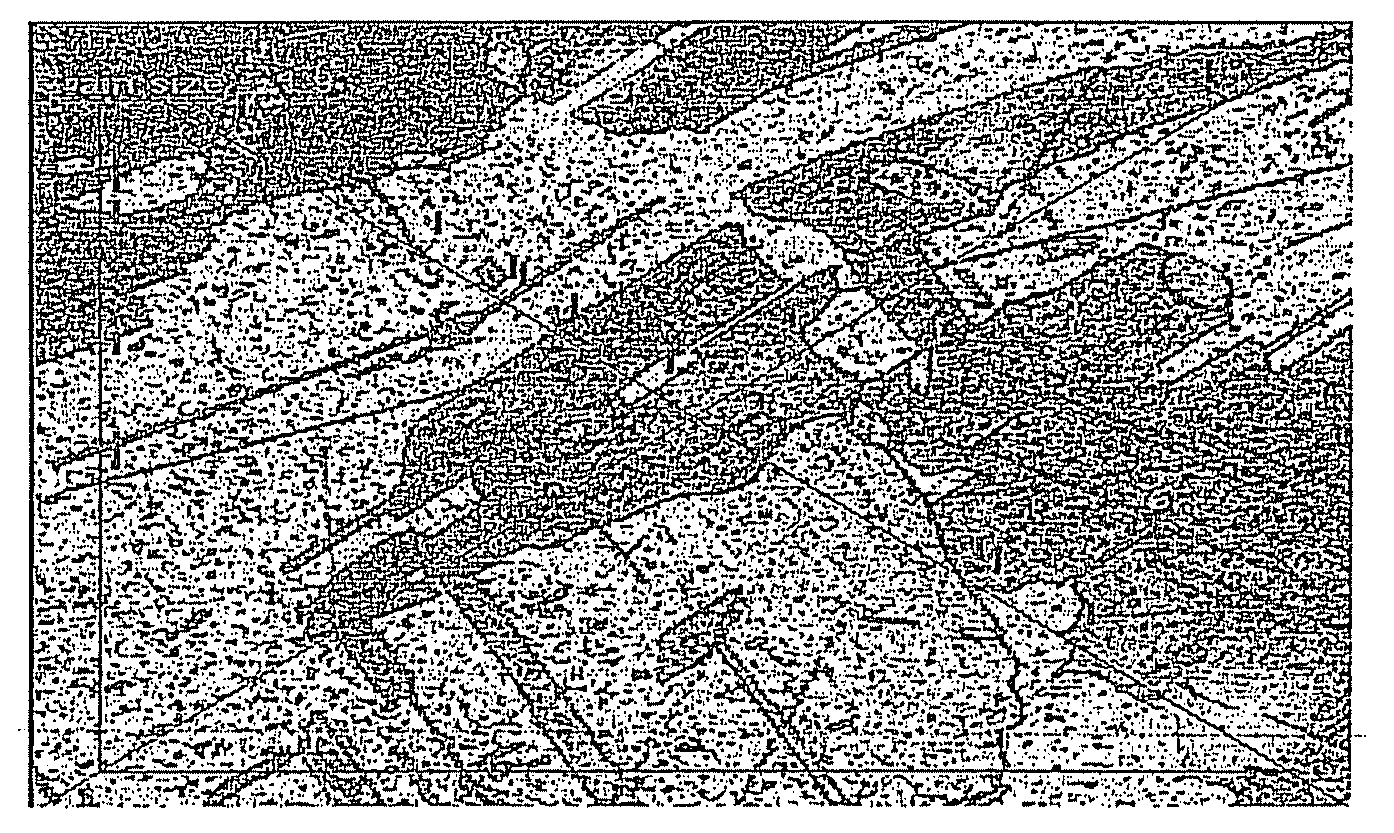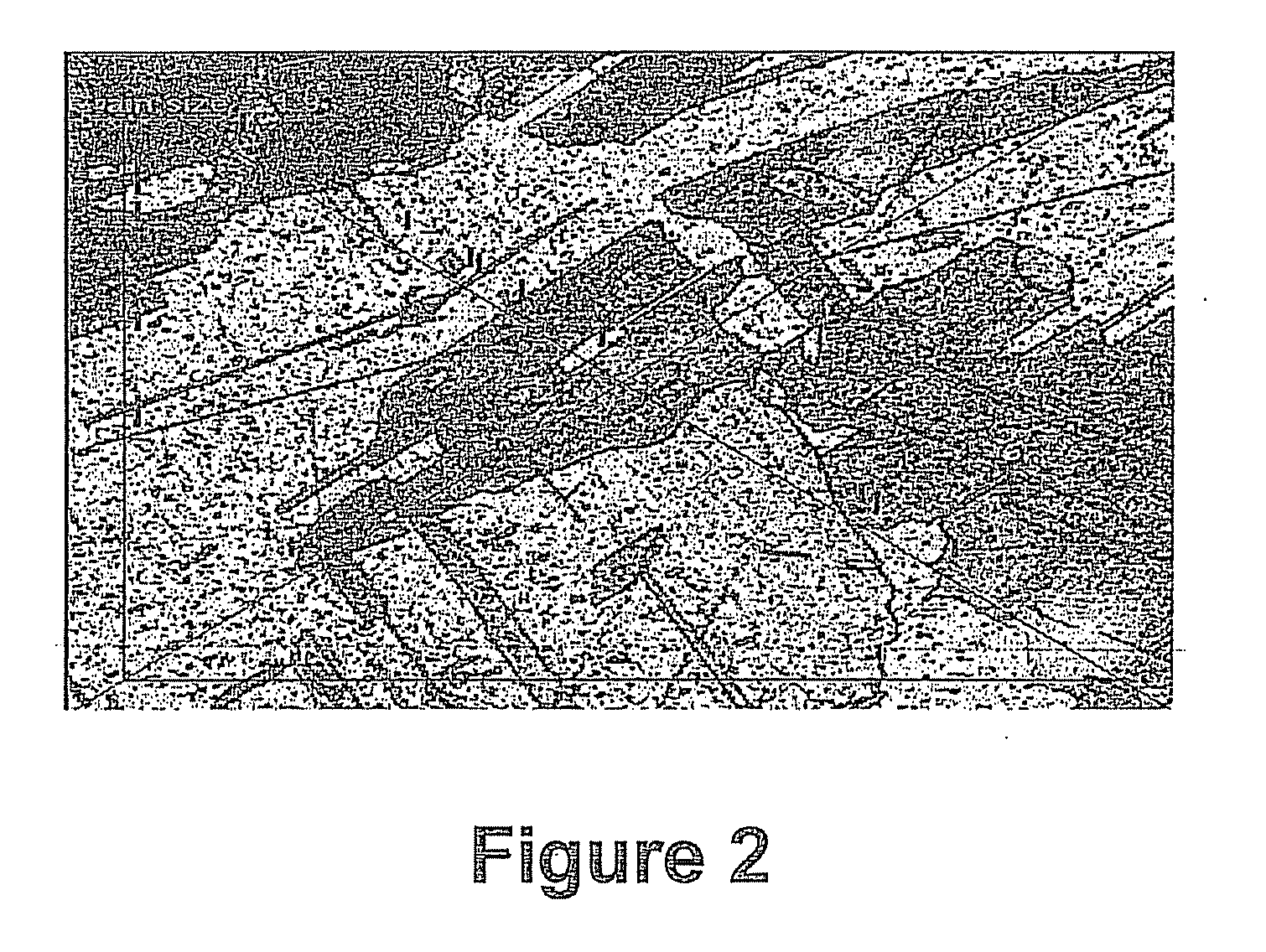Sintered copper-based material having increased grain size and method of making the same
- Summary
- Abstract
- Description
- Claims
- Application Information
AI Technical Summary
Benefits of technology
Problems solved by technology
Method used
Image
Examples
Example
Comparative Example 1
[0032]FIG. 1 depicts the grain structure of a 100% copper sintered material formed through a conventional process. The observed grains have a maximum dimension from about 3 to about 20 μm. The comparative example is formed by compacting copper powder having an average diameter of 10 μm in a mold to a density of about 6.7 g / cc. The compacted sample is then preheated at a temperature of about 482° C. for about 15 minutes under an atmosphere of about 25% hydrogen and about 75% nitrogen. The sample is then sintered at a temperature of about 1038° C. for about 30 minutes under an atmosphere of 25% hydrogen and about 75% nitrogen. Pressure is then applied to size the sintered sample to a density of about 8.6 g / cc.
Inventive Example
[0033]FIG. 2 depicts the grain structure of a 100% copper sintered material formed in accordance with one aspect of the innovations disclosed herein. The observed grains have a maximum dimension from about 125 to about 250 μm. The comparative...
Example
Comparative Example 2
[0035]FIG. 3 depicts the grain structure of a wrought copper barstock meeting the specifications of Unified Numbering System C10100. The observed grains have a maximum dimension from about 150 to about 300 μm. As can be observed, the grain size of the Inventive Example is substantially similar to the grain size of wrought copper found in Comparative Example 1.
[0036]Those skilled in the art will readily recognize that the actual grain size obtained using the innovations disclosed herein will vary depending upon the nature of the powder copper and powder alloy metal metals selected for sintering and variables selected, including and not limited to identity of alloy metals, powder particle size, temperature, atmosphere and times for pre-heating and sintering. In one embodiment, at least about 80% by weight of the grains in the sintered copper-based material have a maximum dimension greater than about 50 μm. In another embodiment, at least about 80% by weight of the...
PUM
| Property | Measurement | Unit |
|---|---|---|
| Grain size | aaaaa | aaaaa |
| Grain size | aaaaa | aaaaa |
| Grain size | aaaaa | aaaaa |
Abstract
Description
Claims
Application Information
 Login to View More
Login to View More - R&D
- Intellectual Property
- Life Sciences
- Materials
- Tech Scout
- Unparalleled Data Quality
- Higher Quality Content
- 60% Fewer Hallucinations
Browse by: Latest US Patents, China's latest patents, Technical Efficacy Thesaurus, Application Domain, Technology Topic, Popular Technical Reports.
© 2025 PatSnap. All rights reserved.Legal|Privacy policy|Modern Slavery Act Transparency Statement|Sitemap|About US| Contact US: help@patsnap.com



